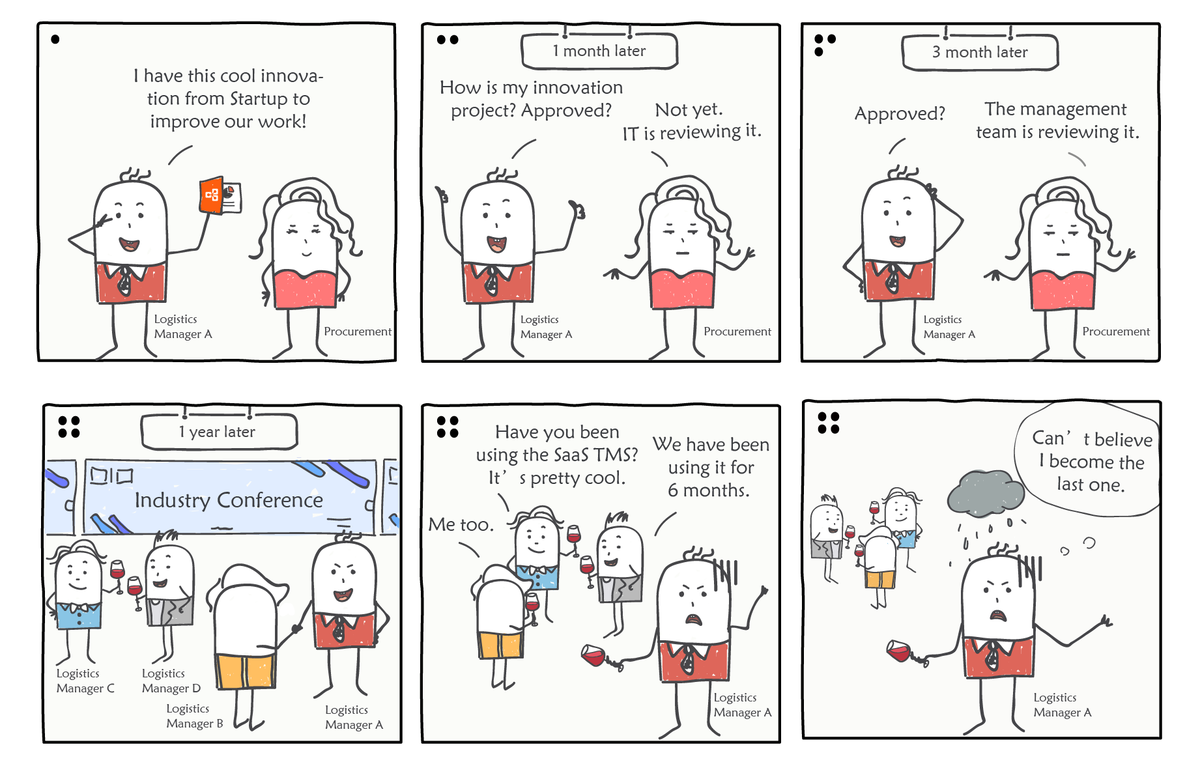What makes the “SaaS+APP” mode TMS become the standard in the APAC logistics market?
A latest report, “Transportation Management Systems Market Insights – 2027”, published by Allied Market Research, states that the global transportation management system market was valued at $5,467 million in 2019, and is projected to reach $11,367 million by 2027, registering a CAGR of 9.6% from 2020 to 2027.
As an important part of the transportation supply chain, the transportation management system (TMS) aims to optimize and improve the transportation process and realize the real control of the whole cycle from cargo owners, 3PLs, carriers, drivers to customers.
With increasing complexities of logistics and transportation, the popularity of the TMS platform is continuously growing. According to recent studies, almost 35% of the businesses are now using the platform for managing their transportation network. Technically, TMS enables better transaction and communication to allow users to leverage from vast real-time data, make easier decisions, and plan & strategize for optimal transportation solutions.
The current market volatility has highlighted the significant role of the supply chains in the overall success and valuation of global corporations. Today’s supply chains are incredibly complex, with myriad partners spread across multiple regions as part of an unprecedented, intertwined global trade ecosystem. The COVID-19 pandemic has caused an enormous strain on the global supply chains as they rush to complete and ship orders as quickly as possible which is driving the adoption of transportation management systems among the end users, and accelerating the digital transformation of the transportation industry.
Preferred Mode of Transportation Management System Market
Nowadays, more and more cloud-based transportation management systems are sold as software-as-a-service (SaaS). This means that users subscribe to the technology on a monthly or annual basis instead of purchasing the technology outright. This is more cost-effective and users are always on the most recent version of the software, which provides opportunities for the overall growth of the market as well.
North America dominates the transportation management system market as the TMS industry, providing the largest revenue worldwide due to large number of players and industry columns. As the epidemic enters a normal control phase, the global supply chain is recovering in an orderly manner, international trade is growing, and the share of Asia Pacific will achieve a significant increase. And in recent years, the penetration rate of smart phones has been increasing and e-commerce in Asia Pacific has been developing rapidly. Therefore, TMS’s mobile APP mode will also gradually become the standard for the transportation management market in Asia Pacific.
The leading enterprises in various industries launched digital reform several years ago. As a pioneer of transportation management platform, oTMS has won the favor and recognition of many leading enterprises through the connecting multiple parties on a common workflow transportation management system since its launch in 2013. Using SaaS+mobile APP+API+IOT, oTMS covers road, express and multi-modal shipments within China mainland, incl. real-time visibility, freight cost management, optimization, billing, dock appointment and BI analytics.
As the Asia-Pacific region gradually keeps up with the digitalization process in North America, and the uncertainty in the global supply chain increases, enterprises need to know all the situations of their cargoes when they are transported at home and abroad to improve certainty and their own customer experience. oTMS has now realized the digital upgrade of international sea and air transportation on the product side. Through third-party pre-intergrating with shipping and air cargo companies as well as major ports and customs, it enables import and export logistics tracking and enhances overseas information control. This coverage keeps expanding.
In an complex environment, transportation management system is an important foundation for enterprises to move towards refined and intensive management. Especially for large enterprises with multinational business, increasing the digital transformation of logistics can accumulate more power to improve comprehensive competitiveness. oTMS always insists on pioneering and innovation to help enterprises’ business growth through advanced technology and perfect products.







